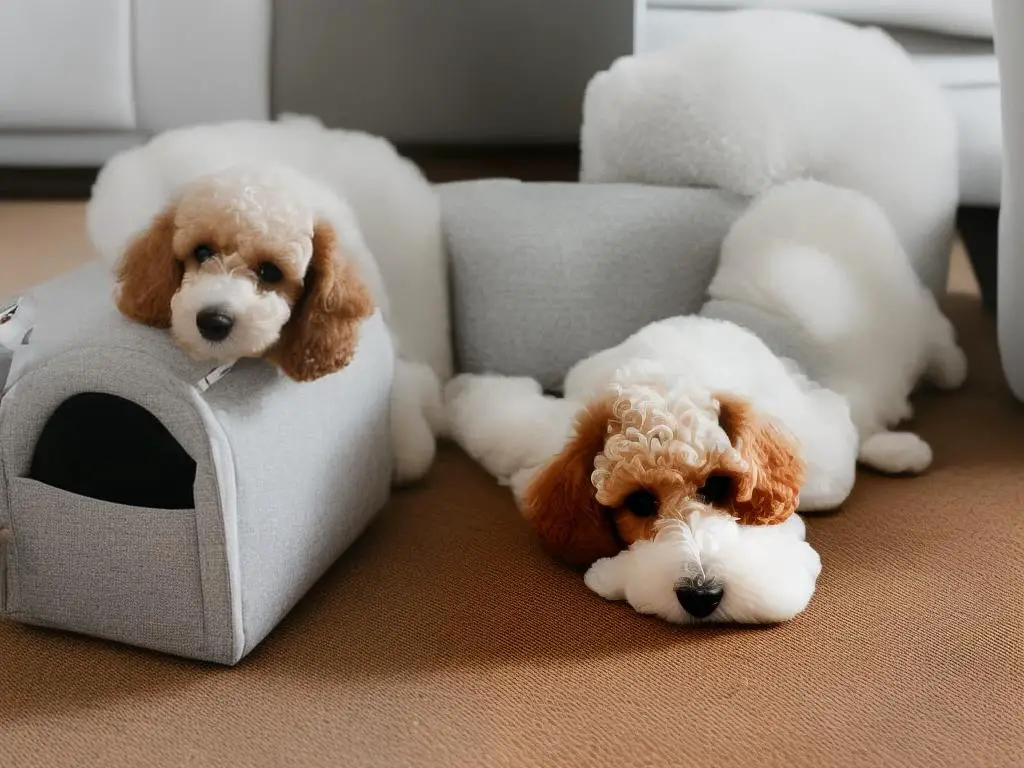Mastering Teacup Poodle Crate Training: A Guide
Fostering a safe, comfortable, and loving living environment for any pet is undoubtedly the ultimate goal of a pet owner – and teacup poodles are no exception. Crate training, despite popular misconceptions, can prove to be an immensely helpful tool in creating such environment. This artfully crafted guide aims to demystify the process and offer insights about the philosophy behind crate training, its wealth of benefits, and the various methods that can be employed. Specifically tailored for teacup poodles, the guide also delves into details about how to choose the right crate in regards to size and comfort, vital aspects to consider for the well-being of your petite friend.
Understanding Crate Training Basics
Philosophy Behind Crate Training
Crate training is based on the principle that dogs as descendants of wolves, seek out small, enclosed spaces for safety, comfort, and security. This instinctual desire is satisfied using a crate, translating it into what we call a modern den for dogs. The crate is not to be used as a punishment but rather as a tool for setting boundaries and creating a safe space for the dog. It’s a sanctuary where the dog can retreat when it is stressed or needs some alone time.
Benefits of Crate Training
Crate training brings about a multitude of benefits. The major benefit is that it aids in preventing destructive behavior when you are not around to supervise. It is especially helpful in house training because dogs tend not to soil their sleeping area. Furthermore, crate training can be beneficial for traveling with your pet, as it provides them with a familiar environment that minimizes stress and anxiety. For teacup poodles, crate training is even more important as these dogs are tiny, fragile, and more likely to get injured or lost in a big, open house.
Different Methods of Crate Training
There are generally two methods of crate training, the longer method and the weekend method. The longer method is a gradual and self-paced approach, gradually increasing the time the dog spends in the crate. The weekend method is quicker, done over a few days of constant supervision. Both methods require patience, and you should never force a dog to stay in a crate against its will.
Crate Training Teacup Poodles
Particularly for teacup poodles, crate training should be implemented gently and patiently. These tiny pets are sensitive and may become anxious if introduced to crate training aggressively. Start by introducing the crate as a positive environment, leaving the door open and incentivizing them to go inside using treats or toys.
Choosing the Right Crate
Teacup poodles are tiny dogs; their crate, therefore, should be of an appropriate size. It must be big enough for them to stretch, turn around comfortably, and sit upright without hitting their head but small enough to not leave too much open space, which might lead to them going to the bathroom in it.
The crate should have good ventilation, too; wire crates are preferable. It should also be comfortable, add a bedding or towel that they can lie on. However, make sure they cannot chew it up or ingest it which might be a choking hazard.
Choose crates with easy-to-operate yet secure latches, as teacup poodles are clever and might figure a way out. Lastly, since teacup poodles are likely to be carried a lot, be sure that the crate has sturdy handles for convenient transportation.
In conclusion
Crate training is a necessary and beneficial practice for your teacup poodle. Though it might take time and patience, it’s worth it for the comfort, safety, and peace of mind it brings. Just remember, the goal is to create a happy, secure den your poodle will love to retreat to, not a prison it dreads.

Implementing Crate Training Techniques
Introducing Your Teacup Poodle to the Crate
The first step in crate training your teacup poodle is introducing him or her to the crate in a positive and non-threatening manner. Make the crate comfortable and inviting, with a soft blanket and a few toys. Encourage your poodle to explore the crate by leaving the door open and placing treats inside, thus making it a rewarding experience. Initially, let your poodle come and go as they please, without shutting the door.
Using Positive Reinforcement
During the crate training process, it’s important to always use positive reinforcement. This means rewarding your poodle every time he or she goes into the crate. Use treats, praise, or toys as a way to make the experience positive. Never force your poodle into the crate or use it as a punishment, as this will create a negative association that can make training more challenging.
Setting a Crate Training Schedule
Teacup poodles thrive on a consistent routine, so set a regular crate training schedule. Start with short, frequent periods in the crate and gradually increase the duration over time. For example, you could start with 5 minutes and gradually increase to 30 minutes, 1 hour, etc. Make sure not to leave your teacup poodle in the crate for more than a few hours at a time, and never overnight.
Addressing Whining
Common among all breeds, your teacup poodle may whine or become anxious when introduced to crate time. It’s crucial to handle this carefully. Never reward whining with attention as this encourages the behavior. Instead, give your poodle attention when they’re quiet. If the whining continues, you may need to shorten crate time or check for potential causes of distress, like needing to potty or being uncomfortable in the crate.
Crate Training Tips for Teacup Poodles
Given their small size, teacup poodles can feel overwhelmed in large crates, so ensure the crate is cozy and appropriate to their size. A crate that’s too large can also lead to your poodle using one corner as a bathroom, which works against the purpose of crate training for housebreaking.
Keep in mind teacup poodles are sensitive to cold temperatures due to their size. Make sure the crate is not placed in a drafty area and is cozy with blankets.
Teacup poodles are known for their intelligence, so with patience, consistency, and positive reinforcement, your poodle will quickly learn to love their crate as their safe space.

The key to successful crate training lies in consistency, patience, and an understanding of your teacup poodle’s needs. Implementing a crate training schedule, utilizing positive reinforcement methods, and managing common issues such as whining are all integral components of crate training. By developing these skills, you can ensure that your teacup poodle feels secure and content in its crate, and by extension, in your home. Remember, crate training is not just about confining your poodle to a specific area, but about creating a safe haven for it. Use these insights and practical tips to start your journey to successful crate training and better living conditions for your beloved pet.

